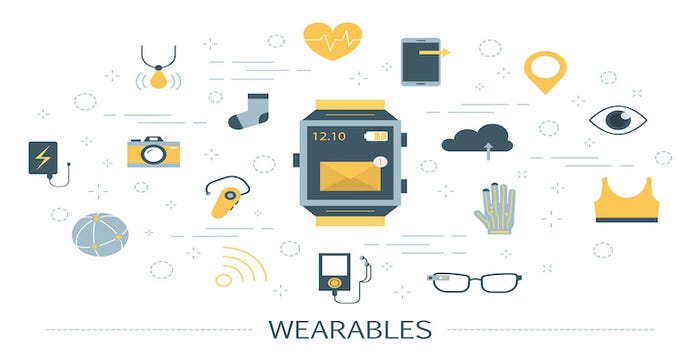Then and Now: Incredible Changes in Wearable Technology
Seeing is believing just how much wearable technology has changed over the last 20 years.
September 28, 2020

Wearable technology has changed a lot over the last 20 years. Today, wearable gadgets have smart sensors and are typically connected to the Internet and the cloud. But that wasn’t always the case. In 2000, the first Bluetooth headset was sold. It was considered a novelty. Today, the wireless wearable market is expected to reach 1.1 billion in 2022. By that time, 5G may well be the protocol of choice for many of these devices.
In 2020, Omdia’s Tractica predicts that fitness trackers and smartwatches will account for 50% of the wearable market. Body sensors are expected to be the third-largest wearable device segment by 2022, driven largely by wearable patches used in healthcare applications, with body sensor shipments reaching 92.1 million by 2022.
Healthcare and health-focused applications in general are seen to be a major driver for the next phase of growth in wearables, according to Tractica. Wearable device companies that pivot beyond fitness and activity tracking, toward preventing and managing chronic health conditions like diabetes and heart problems will succeed in the long run.
Truly, a lot has changed over the last couple of decades years. To appreciate these changes, let’s look at major milestones in three specific areas, namely, batteries, smart glasses, and computing platforms from 2000 to 2020.
John Blyler is a Design News senior editor, covering the electronics and advanced manufacturing spaces. With a BS in Engineering Physics and an MS in Electrical Engineering, he has years of hardware-software-network systems experience as an editor and engineer within the advanced manufacturing, IoT and semiconductor industries. John has co-authored books related to system engineering and electronics for IEEE, Wiley, and Elsevier.
About the Author(s)
You May Also Like



.jpg?width=300&auto=webp&quality=80&disable=upscale)

